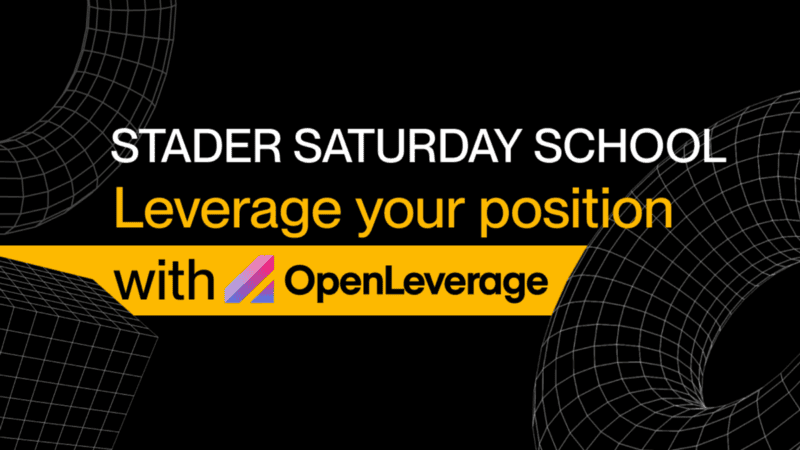Leverage your position with OpenLeverage
Welcome to a new issue of the Saturday School. In light of our partnership with Open Leverage, today we will discuss leveraged trading.

Welcome to a new issue of the Saturday School. In light of our partnership with Open Leverage, today we will discuss leveraged trading.
This article will discuss the basics of leveraged trading and how you can benefit from leveraged trading using Open Leverage.
What is Leveraged Trading?
In simple terms, leveraged trading is when a trader borrows money to open a position on a cryptocurrency or any other asset. It is meant to amplify the outcome significantly, meaning a successful leverage trading can get you a much larger profit than what you would have booked with regular trading.
In order for you to use leverage, you need to put in a collateral amount. For example, if you want to open a 10X leverage position on a crypto asset with $1000, you need to put in $100.
Let’s say you bought 1 BNB for $1000 and the price increased by 20%, you will book a profit of $200. Whereas if you had invested your own capital ($100 in this case), your profit would have only been $20.
In leverage trading, you can either bet on or against an asset.
Let’s take a look at both scenarios:
Let’s say you speculate that BNB’s price will increase and therefore, you open a high leverage position. This is known as a long position.
The example used above is a long position.
On the other hand, if you speculate that BNB’s price will decrease, you can open a short position.
An example will be, if you borrow 5 BNB worth $1000 from someone/somewhere. You sell the BNB at market price and now have a total capital of $5000.
One month from the day you opened your position, BNB’s price dropped to $800. You bought back the 5 BNB and returned it. While doing so you booked a $1000 profit.
Risk Management for Leveraged Trading
As delicious as leverage trading sounds, it doesn’t come without risks.
If your speculation fails, and the market goes on the opposite side, your collateral can be liquidated.
For example, in the case of your long position on BNB, if the price decreases by 20%, it’ll pose a threat to your whole position. The exchange determines a minimum collateral requirement depending on your leverage.
If the collateral goes below that, you have to either put more funds down to protect your position or the exchange will liquidate, resulting in a loss.
The higher your leverage, the more sensitive your position gets to volatility. In some cases, even a 1% difference in volatility can cause trouble.
The best way to manage your risk is to go moderate on risk and use options like stop loss and take profit.
Stop loss lets you get out of a position if you bleed money once you hit a specified amount set by you.
On the other hand, the take profit option gets you out of a position once you have booked a specified amount of profit set by you. This way you get automatically realize profit without exposing yourself any further.
Open Leverage and Margin Trading
Open leverage is fully permissionless lending and margin trading platform with a total trading volume of $784M+.
You can trade and lend with any token or token pair on this multichain platform. Open leverage has the most sophisticated environment for high-volume time-sensitive trades in crypto without compromising the operational integrity of high-level quant strategies.
To kick off our partnership, OpenLeverage and StaderLabs have kicked off a joint campaign with the BNBx:BNB pair having gone live for margin trading. To start with, both projects are providing a combined $16,500 worth of tokens to incentive lending and trading.
Stader BNB dApp Link Here
https://bnb.openleverage.finance/app/trade/pairs/356